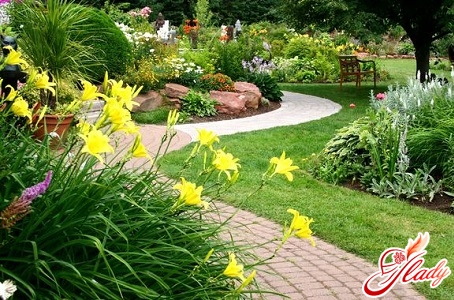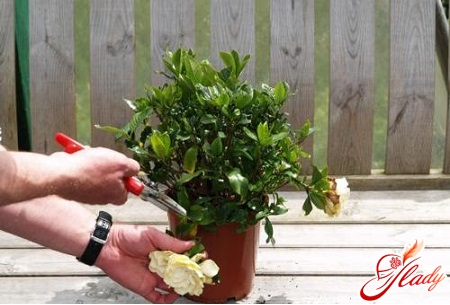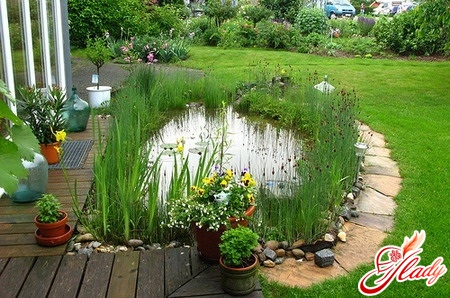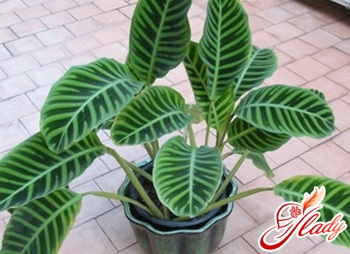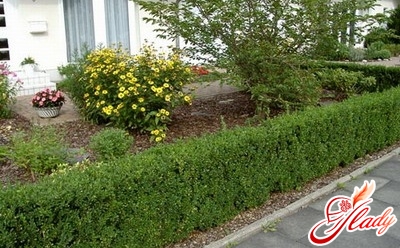 Who among us hasn't dreamed of having our own lemontree? The perennial evergreen plant attracts and fascinates gardeners, despite the demanding care and the long wait for the first fruits. A lush spreading crown, fancy pearl flowers, fragrant and healthy fruits - all this will not leave you a chance to remain indifferent to lemon when choosing a citrus crop. In our country, the most common varieties are "Pavlovsky", "Maikopsky", "Novogruzinsky". Also adapted for growing at home are the varieties "Genoa", "Lisbon", "Lunario". The choice of variety is yours, but what to pay attention to when buying and how to care for a lemon at home, we will tell you in this article.
Who among us hasn't dreamed of having our own lemontree? The perennial evergreen plant attracts and fascinates gardeners, despite the demanding care and the long wait for the first fruits. A lush spreading crown, fancy pearl flowers, fragrant and healthy fruits - all this will not leave you a chance to remain indifferent to lemon when choosing a citrus crop. In our country, the most common varieties are "Pavlovsky", "Maikopsky", "Novogruzinsky". Also adapted for growing at home are the varieties "Genoa", "Lisbon", "Lunario". The choice of variety is yours, but what to pay attention to when buying and how to care for a lemon at home, we will tell you in this article.
The main recommendations when choosing a lemon tree
The homeland of lemon is warm India, China,Pacific tropical islands. Therefore, the plant loves light, warmth and humidity very much. Pay attention to which side your windows are located, and depending on this, choose the right lemon variety. In most cases, even on the south side, a lemon tree requires additional lighting. But there are varieties that can be perfectly kept on northern windows, and with great desire, you can grow a healthy plant, of course, providing artificial light and careful care. When purchasing indoor lemon seedlings, focus your attention on the roots: are they sufficiently developed, are the trunks grafted onto the lemon seedlings conscientiously. The roots of the tree should never remain dry, otherwise mycorrhiza (a specific fungal coating on the roots) will die. They must be sprinkled with sawdust or soil. Young shoots can be distinguished from old ones by color. Old leaves - dark green, dense and leathery, but young seedlings have a light green color, they are delicate in appearance and touch. The best option would be to purchase seedlings from a true lemon tree lover. He will share with you the rules of care and tell you about the conditions of the plant: its lighting, temperature conditions, soil composition. And if you can create care with the closest possible conditions to the necessary ones, your tree will continue to develop well. Buying a ready-made specimen in a store or from hands is the easiest way to purchase. But growing a lemon tree from a seed and a cutting is a more exciting and painstaking task. The cutting will eventually grow into an adult tree, bloom and give fruits of the parent variety. The situation is more complicated with a seed. At first, a “wild” will grow from it, it is recommended to graft it with a piece of the stem of the required fruiting tree. An ungrafted seedling will, of course, also bloom and even be able to bear fruit, but there are no guarantees of the quality of these lemons. Moreover, you can get the first fruits only after 8-10 years. However, plants grown in this way are resistant and more easily adapt to changing conditions - they are easier to care for.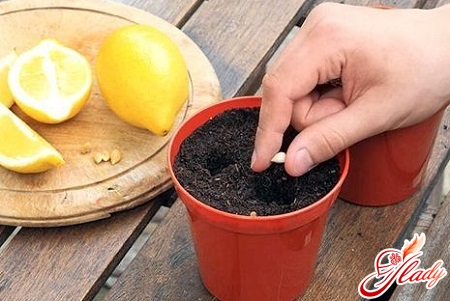
Conditions of detention
Like the whole culture of citrus fruits, lemon is betterразвивается при достаточно ярком рассеянном свете. Прямые солнечные лучи так же вредны для дерева, как и недостаток освещенности. При интенсивном солнце весной и летом растение нужно притенять, иначе высока вероятность солнечных ожогов. Имейте в виду: на рост побегов благоприятно воздействует длинный световой день, а вот короткий день способствует плодоношению. Немаловажное условие содержания лимонного дерева заключается в поддержании правильной температуры. Весной, когда растение начинает усиленно расти и формировать бутоны, следует быть особенно внимательной к температурному режиму. Идеальным для развития бутонов будет температура в пределах +14…+18 градусов. При более высоких показателях завязи могут высохнуть и осыпаться. Неплохо будет выносить домашний лимон на балкон или в сад, но не забывайте накрывать или уносить дерево при резких перепадах температур, что свойственно природе весной. Находясь на улице, ваше растение закаляется и привыкает к яркому солнечному свету. В летний период растение будет чувствовать себя комфортно и при комнатной температуре, и на открытом воздухе. Но не забывай затенять дерево от прямых солнечных лучей. С наступлением же осени лимон желательно занести в помещение пораньше. Если на улице уже прохладно, то дома в тепле дерево может зацвести, а осенью это совсем нежелательно. Процедура перемещения с балкона домой тоже должна быть постепенной, в течение недели-двух. Для зимовки лимона обеспечьте температуру воздуха не выше 12-14°С при умеренной влажности. Такие условия наиболее комфорты для листьев и плодов в зимний период. Многие растения погибают или перестают давать плоды из-за неправильного температурного режима зимой. Не забывайте проветривать комнату, но берегите растение от сквозняков. Кроме того, поливать дерево зимой, когда оно уже находится в состоянии покоя, нужно редко и очень аккуратно. Нельзя заливать грунт, иначе корни могут загнить и растение погибнет. Весной же, при интенсивном росте, частота и объем полива увеличивается; необходимо начинать удобрять почву. Для корней немаловажным фактором является дыхание, поэтому необходимо периодически рыхлить верхний слой грунта. А для полива использовать теплую воду. Значимое условие содержания лимонного дерева – влажность воздуха. Ненадлежащая влажность — одна из главных причин гибели растения. Для создания необходимой влажности как можно чаще опрыскивайте дерево из пульверизатора, особенно зимой в отапливаемом помещении. Также можно использовать специальный поддон с водой. Еще один способ – поставить горшок с лимонным деревом на поддон с мокрым мхом или керамзитом. Время от времени лимоны нужно пересаживать. Если вы заметили, что грунт в горшке стал быстро пересыхать, а из нижнего отверстия вылезают корни – настала пора для пересадки лимона. Лучшим всего будет, если проделывать эту процедуру весной перед началом роста побегов. Если момент упущен, лучше оставьте растение в покое. Корневые стержни очень тонкие и нежные, и адаптироваться в новом грунте им будет сложно, поэтому нет необходимости повторять процедуру ежегодно. Неаккуратная пересадка может привести к опаданию листьев и веток, поэтому будьте осторожны и не повредите земляной ком. Немаловажным условием правильного ухода за комнатным лимоном является подбор горшка. Подойдет любая непрозрачная керамическая или глиняная емкость с отверстием внизу. Новый горшок должен быть всегда на 2-3 пальца больше предыдущего. Важно при неоднократной пересадке следить, чтобы корневая шейка была всегда погружена в почву на одном уровне, а основание ствола не должно быть выше горшка. Также необходимо использовать хороший дренаж. Почва для молодых растений состоит из равного количества перегноя, дерна, листовой земли и компоста. Лимонное дерево после пересадки нужно обязательно обильно полить, а вот с подкормкой стоит повременить. Удобрять растение можно через 2-3 недели и только после поливки водой. Подкормка лимона 2-3 раза в месяц в первой половине лета способствует сладости плодов и заметно уменьшает горький привкус. Зимой при искусственном освещении необходимо удобрять лимон 1 раз в неделю. В качестве подкормки используют минеральные и органические удобрения. 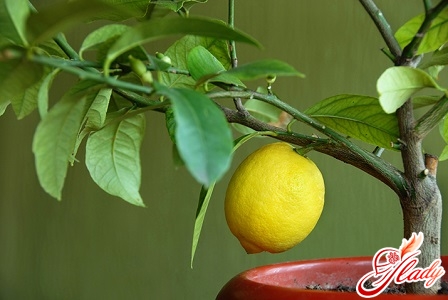
Diseases of the lemon
Since lemon is a capricious plant and oftenis subject to many plant diseases, knowledge in this matter is simply necessary for you. Let's look at the possible causes of diseases of indoor lemon. Illiterate care of the plant Seemingly healthy leaves can fall off for the following reasons: poor lighting in winter, high temperatures, use of cold water for irrigation, marshy or, conversely, dehydrated soil. Insufficient fertilizing Please note that if old leaves become mottled and gradually turn yellow, then they lack nitrogen. If the leaves have faded, the ends have dried to a rusty color - there is a lack of phosphorus. Folds between the veins will indicate a low potassium content. But the need for iron, manganese or zinc is expressed by a clearly visible network of dark veins on a light leaf. This can also be associated with acidification of the soil in the pot. Ovaries crumble - insufficient content of manganese, boron. But if the ends of the leaves dry out - This means you have overfed the lemon. Small insect pests Lemon is most often affected by scale insects, mealybugs and mites.
- Shield
On lemon leaves, most often, the bottom ones appearRound brown balls are already adult parasites, firmly attached to the veins of the leaves. They have a hard shell that is resistant to chemicals. In case of minor damage, the scale insect should be removed with a cotton pad and the surface wiped with alcohol. However, this will not rid the plant of microscopic larvae. To completely heal the lemon, it is necessary to use insecticides. It is most likely impossible to save the tree in an advanced stage, the scale insects multiply quickly, and the lemon gradually dries out.
- CEREBRAMS
A similar pest, but capable of causing destructionplant much faster. The methods of combating mealybugs are the same as for scale insects. To begin with, it is recommended to clean the leaves from mealybugs or scale insects with soapy water several times, then spray the diseased plant with a solution of soap (4 g) and anabasine sulfate (2 g). The procedure must be repeated in a week.
- Aphid
If the lemon tree is affected by aphids orYou can use garlic infusion for scale insects. Peeled garlic should be crushed and infused in water for 24 hours. The leaves of the plant are either washed or sprayed with a soap solution from a spray bottle.
- Ants
Sometimes ants can also cover the lemon. In this case, you need to sprinkle the top layer of soil with insecticide "DDT dust" and whiten the trunk with chalk.
- Spider mite
A barely noticeable red spider.At an advanced stage, a web is noticeable. Lemon is mainly affected by low humidity and high temperatures. Yellow, then brown spots appear on the leaves. The main method of combating ticks is spraying with sulfur. With an excess of sulfur, jumping pests - paduras - may appear on the surface of wet soil. They can be eliminated with a powder of Persian chamomile. Not often, but earthworms appear in the soil. This happens with abundant watering and acidification of the soil. Change the care: loosen the soil for better air circulation and water with potassium permanganate. After the worms crawl out to the surface, they must be removed. Keep in mind: when using insecticide spraying, the soil surface must be covered with paper or cloth. And, of course, you cannot spray buds, flowers and fruits with poisons. Infectious diseases
- Gommoz
Usually the disease manifests itself when there is over-watering.soil, using cold water for irrigation, excess nitrogen and planting the lemon too deep. A crack forms in the lower part of the trunk, from which a viscous dark liquid flows - gum. The crack gradually increases and rots, the bark dies. What to do? As a rule, the tree cannot be cured. You can try to clean the cracks from rot, treat with a solution of copper sulfate and transplant into new soil.
- Black fungus
The leaves and then the branches are enveloped in darkness.moldy coating. Leaves that are already covered with scale insect and mealybug secretions are especially quickly affected. It is necessary to wipe off the coating on the leaves and trunk with a cloth soaked in copper sulfate or Bordeaux mixture. And do not forget to ventilate the room. Disease prevention Of course, it is no secret that prevention is the best cure for diseases:
- Strongly recommended every weekarrange a water shower a room lemon, before covering the pot with the ground. It will not be superfluous to alternate the treatment with plain water and soapy water.
- Carefully inspect new young plants for diseases and pests. Never place them next to other flowers. Quarantine - 2-3 weeks.
- Daily carefully inspect your pet, look under the leaves, inspect the soil.
- Periodically, every 1.5-2 months, spray the tree with manganese solution or Bordeaux fluid.
When growing lemon correctly, take care ofaesthetic beauty of the tree. Initially, form a beautiful crown. Avoid a single-stemmed look. Even at an early stage of development, pinch the tops of the seedlings to stimulate the growth of side branches. If your goal is to get useful fruits, activate flowering with additional gadgets: phytolamps, humidifiers, etc. In places of origin of lemon - on tropical islands - trees begin to bear fruit after 5-6 years. In indoor conditions, everything depends on the conditions of maintenance. The more similar conditions you create, the sooner you will get real home lemons. Now you have a general idea of how to care for a home lemon, and finally, one more important and most important condition is your love and interest in the plant. And your reward will be a real lemon garden with exotic flowers and useful fruits.




